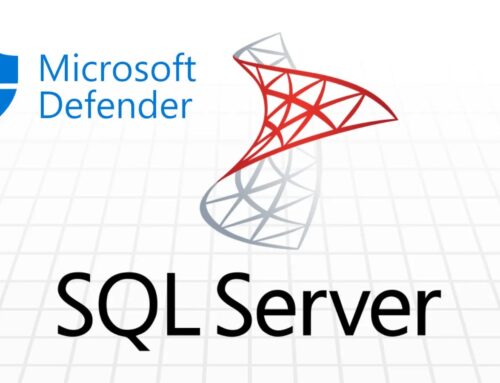
Bragg Confirms Cyber Attack – Hackers Accessed Internal IT Systems
Bragg Confirms Cyber Attack: Understanding the Breach and Bolstering Defenses
The digital landscape is a constant battleground. Even the most robust security infrastructures can become targets, as evidenced by the recent incident involving Bragg Gaming Group. A cybersecurity breach, confirmed by the online gaming technology provider, highlights the persistent threat of unauthorized network intrusions and the critical importance of immediate, effective incident response.
The Breach Incident: What We Know
Early Saturday morning, August 16, 2025, Bragg Gaming Group discovered a significant cybersecurity incident affecting their internal IT infrastructure. Unauthorized network intrusion attempts successfully bypassed the company’s security perimeter, leading to a compromise of their systems. The immediate activation of incident response protocols demonstrates a proactive stance, but the breach itself underscores the sophisticated tactics employed by threat actors.
While specific details regarding the exploit methods or the precise nature of the accessed internal IT systems have not yet been publicly disclosed, such breaches often leverage common attack vectors. These can include phishing campaigns leading to credential compromise, exploitation of unpatched vulnerabilities in accessible systems, or brute-force attacks on weak authentication mechanisms.
Understanding the Impact of Internal IT System Compromise
A breach targeting internal IT systems can have cascading detrimental effects for any organization. Compromised systems can serve as launchpads for further malicious activity, including:
- Data Exfiltration: Sensitive company data, intellectual property, employee records, or even customer information could be stolen.
- Data Integrity Issues: Malicious modification or deletion of critical business data, leading to operational disruption.
- Ransomware Deployment: Encryption of systems and data, demanding a ransom for their release.
- Operational Disruptions: Downtime of critical services, impacting business continuity and revenue.
- Reputational Damage: Loss of trust among customers, partners, and investors, leading to long-term financial and professional setbacks.
Lessons Learned: Proactive Incident Response is Key
Bragg Gaming Group’s immediate incident response activation is a crucial positive takeaway from this event. A well-defined and regularly tested incident response plan is paramount for minimizing the damage of any breach. Key elements of effective incident response include:
- Early Detection: Implementing robust monitoring and alerting systems to identify suspicious activity quickly.
- Containment: Rapidly isolating affected systems and networks to prevent the spread of the attack.
- Eradication: Removing the threat actor’s access and any malicious artifacts from the compromised environment.
- Recovery: Restoring systems and data from secure backups.
- Post-Incident Analysis: Conducting a thorough investigation to understand the root cause, identify vulnerabilities, and prevent future occurrences.
Remediation Actions and Best Practices for Organizations
While the specific details of Bragg’s remediation efforts are not public, general best practices for protecting internal IT systems and responding to breaches are universally applicable.
- Patch Management: Regularly update and patch all operating systems, applications, and network devices. Unpatched vulnerabilities, such as those that might lead to remote code execution (e.g., CVE-2023-34039 affecting VMware Aria Operations for Logs, or the Log4Shell vulnerability, CVE-2021-44228, which exposed countless systems), are prime targets for attackers.
- Strong Authentication: Implement multi-factor authentication (MFA) for all internal and external access to critical systems. Enforce strong password policies.
- Network Segmentation: Divide your network into isolated segments to limit the lateral movement of attackers in case of a breach.
- Endpoint Detection and Response (EDR): Deploy EDR solutions to monitor endpoints for malicious activity and provide real-time threat detection and response capabilities.
- Security Information and Event Management (SIEM): Utilize SIEM systems to collect, analyze, and correlate security event data from various sources, aiding in early threat detection.
- Regular Backups: Conduct regular, isolated, and tested backups of all critical data. Ensure backups are stored securely off-site and are immune to ransomware attacks.
- Employee Awareness Training: Regularly train employees on cybersecurity best practices, including phishing awareness and identifying suspicious emails.
- Penetration Testing and Vulnerability Assessments: Proactively identify weaknesses in your systems and network through regular simulated attacks.
Tools for Enhanced Cybersecurity Posture
| Tool Name | Purpose | Link |
|---|---|---|
| Tenable Nessus | Vulnerability Scanning & Assessment | https://www.tenable.com/products/nessus |
| Splunk Enterprise Security | SIEM (Security Information and Event Management) | https://www.splunk.com/en_us/products/security/splunk-enterprise-security.html |
| CrowdStrike Falcon Insight EDR | Endpoint Detection & Response | https://www.crowdstrike.com/products/endpoint-security/falcon-insight-edr/ |
| Cisco Talos Intelligence | Threat Intelligence & Research | https://talosintelligence.com/ |
| Veeam Backup & Replication | Data Backup & Recovery | https://www.veeam.com/ |
Key Takeaways from the Bragg Incident
The Bragg Gaming Group cyber attack serves as a stark reminder that no organization is immune to sophisticated cyber threats. The incident underscores several critical points for businesses and cybersecurity professionals:
- Cybersecurity is an ongoing process, not a one-time solution. Continuous vigilance and adaptation are essential.
- Robust, tested incident response plans are crucial for mitigating damage when a breach occurs.
- Proactive security measures, including diligent patch management, strong authentication, and network segmentation, are the first lines of defense.
- Investing in advanced security tools and employee training significantly strengthens an organization’s overall security posture.
While the full extent and implications of the Bragg breach are yet to be fully disclosed, the industry’s focus remains on learning from such incidents to build more resilient and secure digital infrastructures.





